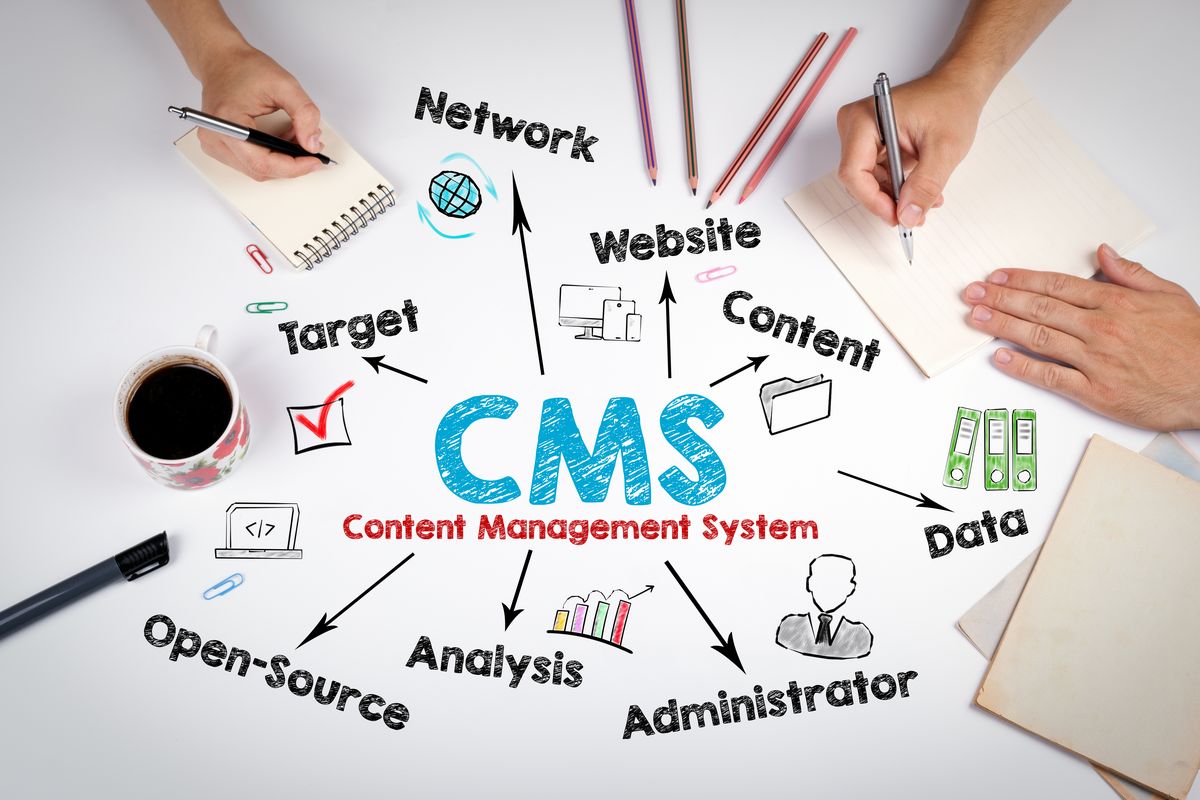The Future of Web Development
With the advent of technology and digitalization, web development trends are changing at the speed of light. Trying to keep up with these changes can be challenging, but knowledge about future trends can give businesses a competitive edge. As we approach 2024, several emerging trends are expected to take the limelight in the world of web development. These trends encompass various sectors ranging from artificial intelligence to user interface design. The purpose of these trends is not just to introduce new technologies but to improve user experience, increase user engagement, and eventually, drive sales.
Artificial Intelligence and Bots
The usage of artificial intelligence (AI) and bots is set to become a major web development trend to watch out. Many websites have already set foot by enabling chatbots, but AI is promising much more. Through machine learning, it can provide personalized browsing experiences for users by understanding their preferences and habits. AI and bots can also take over various mundane tasks such as scheduling, customer service, and even content generation, freeing up humans to handle more complex tasks. The integration of AI in web development also means more advanced features such as voice search and enhanced semantics will become common.
Responsive Web Design
With the growing number of devices and screen sizes, having a responsive web design is no longer a luxury but a necessity. Responsive design refers to making a website adaptable to different devices, regardless of the size of screens. In 2024, we expect to see this trend gain more importance as the diversity of devices continues to increase. Furthermore, with Google's mobile-first indexing, having a mobile responsive website is crucial for search engine optimization. Thus, web developers need to prioritize making designs that are user-friendly and easily navigable on all devices.

All About Speed: PWA and Single Page Applications
Speed has already been an important factor in user experience, but as we move into 2024, it will take up more space. Progressive Web Applications (PWAs) and Single Page Applications (SPAs) are designed to resolve the issue of speed. PWAs are essentially websites that act like apps, allowing users to browse offline, receive push notifications, and install on home screens. On the other hand, SPAs help minimize page reloading for a faster and more seamless user experience. Thereby, websites built as PWAs or SPAs can expect more engagement and a higher retention rate from users.
Voice User Interface and Conversational UI
With the increased use of AI assistant tools like Siri, Alexa, and Google Assistant, the voice user interface offers a higher value for users. It adds to the ease of interaction and enhances accessibility for those with visual impairments. Along the same vein, Conversational UI like interactive chatbots enhances user engagement and satisfaction. They allow for direct and personalized interaction with users, tracking user inquiries, and tailor responses accordingly.
Moving towards 2024, these trends in web development will grow exponentially and incorporate into the mainstream. Businesses and developers need to start leveraging these opportunities to step up their game in delivering an impactful web presence.
Utilization of Augmented Reality (AR) and Virtual Reality (VR)
In recent years, various industries from retail to real estate have been utilizing Augmented Reality (AR) and Virtual Reality (VR) to enhance user experiences. This trend is star-bound to hit web development as well, with high anticipation in the year 2024. AR offers an immersive experience by projecting virtual elements on to the real world, offering user interactivity and engagement in their natural environment. On the other hand, VR provides a full immersion experience, where users can interact in a completely fictional environment. Moreover, websites developed with AR and VR can provide users with a more dynamic experience, promoting several improvements in fields like navigation, visualization, and interaction. This could also include virtual tours, architectural models, or even product demonstrations.

Serverless Architecture
Additionally, the serverless architecture is another emerging trend in web development. This technology can be used to outsource the entire infrastructure operations to cloud-based systems. A significant benefit of serverless architectures is cost-effectiveness as price is based on usage. This flexibility allows businesses to scale without worrying about server capacity. Serverless architectures also reduce the time and resources spent on server management, allowing developers to focus more on product development. Experts predict this model will garner more traction in 2024 as businesses continue to lean toward more efficient and scalable solutions.
Push Notifications
Over the years, push notifications have become an effective tool for engaging users. They increase the likelihood of user interaction, enhancing engagement and user retention by keeping users informed about important updates and promotions without opening the application. When well implemented, push notifications can also be personalized based on the user's behavior, interests, and preferences. For businesses, this could result in a significantly higher click-through rate, making push notifications a vital tool for increasing conversion rates. In 2024, the use of push notifications will become more prominent, further revolutionizing the landscape of web development.
Internet of Things Integration
A rapidly emerging trend that is transforming the world of web development is the integration of the Internet of Things (IoT). IoT devices represent a network of internet-connected physical devices that can collect and share data. From smartphones and watches to refrigerators and vehicles, these connected devices open up exciting avenues for web development. Developers are starting to design websites that can interact with these IoT devices to offer more personalized, immersive, and responsive experiences. This improved level of interactivity and user engagement has immense potential for developers and businesses. Furthermore, IoT integration adds another layer of complexity to web design and development, challenging developers to keep the user interfaces simple and intuitive while ensuring optimal performance. As we move into 2024, expect to see IoT become an intrinsic part of web development, making our digital experiences more interconnected and streamlined than ever before.
Cybersecurity
With an increasingly digital world comes an increased risk of cyber threats and data breaches. Ensuring robust cybersecurity practices will remain a top priority for web developers in 2024 and beyond. Businesses and developers need to stay one step ahead of hackers and cybercriminals by implementing the latest security measures and protocols. Encryption, two-factor authentication, and regular updates and patches are just a few ways developers can make websites safer for users. In addition, as regulations regarding data protection become more stringent, developers will also need to ensure compliance to avoid hefty penalties. Web development practices focusing on data privacy and security can lead to enhanced user trust, brand reputation, and bottom-line revenue in today's digital economy.
3D Visuals and Graphics
As visual content becomes increasingly critical in the digital world, the use of 3D visuals and graphics is set to become a significant web development trend. An enriched visual experience can hold the user's attention, increase engagement, and improve the overall aesthetic of a website. With technology advances like WebGL and Three.js, web developers can now create 3D graphics and animations directly in the browser without the need for plugins or downloads. This leads to immersive visuals that can improve user interaction and engagement. Moreover, with the increasing use of AR and VR, the incorporation of 3D visuals on websites can offer a more dynamic and real-time user experience. As we approach 2024, expect to see the lines between our physical reality and our digital experiences blur with the use of high-quality 3D graphics and visuals.
| Trend | Description | Benefits | Current Usage | Future Implications |
|---|---|---|---|---|
| Artificial Intelligence and Bots | AI and bots are used for personalized user experiences and taking care of mundane tasks. | Improves user experience, increases engagement, and saves human resources | Chatbots and customer service AI | More features like voice search and enhanced semantics |
| Responsive Web Design | A website design that is adaptable to different devices and screen sizes. | Enhances user experience, crucial for SEO | Mobile and desktop responsive websites | More essential with the diversifying device market |
| PWA and Single Page Applications | Websites that act like apps for improved speed and user experience. | Enhanced engagement and retention rate. | Currently used for fast and seamless web browsing | Will gain more space in 2024 with demand for speed |
| Voice User Interface and Conversational UI | An interface that takes and processes voice commands and interactive chatbots. | Improves user interaction and accessibility | AI assistant tools like Siri, Alexa, Google Assistant | More direct and personalized interaction with users |
| Augmented Reality (AR) and Virtual Reality (VR) | Projection of virtual elements in the real world for an immersive user experience | User interactivity and engagement in their natural environment | Used in various fields like real estate for virtual tours and product demonstrations | More dynamic user experience and improvements in navigation and visualization |
5G Technology in Web Development
As we approach the year 2024, the impact of 5G technology on web development is expected to rise dramatically. Offering significantly higher speed and lower latency than its predecessors, 5G promises to revolutionize not just the way users interact with the web, but also the nature of web applications themselves. It is expected to pave the way for real-time applications, high-quality video streaming, and advanced IoT functionalities. With this improved functionality and speed, web developers can create more complex and interactive applications, offering a better user experience. The shift to 5G is a significant evolution in web technologies and developers who adapt to this trend will ensure their apps stay relevant and competitive.
The Impact of Blockchain on Web Development
Blockchain technology is projected to have a profound influence on the future of web development by offering a secure and decentralized method of recording transactions. It can significantly enhance privacy, security, and the efficiency of transactions on the web. Blockchain can be applied to web development in several ways, from creating decentralized web applications (DApps) to secure data storage or even in content delivery networks. By adopting blockchain, web developers provide a more secure and reliable platform for their users, improving trust and credibility. As we move closer to 2024, the integration of blockchain technology into web development practices will likely become more mainstream.
The Role of Data Science in Web Development
By 2024, Data Science is expected to play a crucial role in web development. With the ever-increasing amount of data available, developers can use this information to create personalized user experiences based on user data. Also, the use of data science analytics can help businesses understand how users interact with their websites, provide meaningful insights, draw conclusions about user behavior, and optimize web pages accordingly. Data science can also be used to analyze website performance and user feedback, leading to data-informed decisions that enhance the user experience and conversion rates. The influence of data science on web development is set to become more significant in the years to come as we continue to move toward a more data-driven society.







